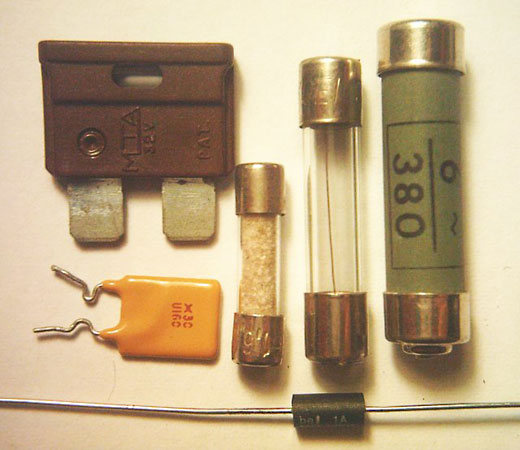
What is a Fuse?
A fuse is a protector. It is a safety device that is used to
protect home appliances like televisions, refrigerators, computers from damage
by high voltage. A fuse is made up of a thin strip or strand of metal, whenever
there is a heavy amount of current in an electrical circuit, the fuse melts and
it opens the circuit and disconnects it from the power supply.
Fuses come in many shapes and sizes, but each one is designed to protect a circuit with a specific set of electrical parameters. These parameters are primarily the operating voltage, operating current, and fuse element melting time or speed of the fuse.
Just like every other electronic component, a fuse has its functions, and they are:
The function of an electrical Fuse:
- An electric fuse acts as a barrier between an electric circuit and the human body.
- A fuse prevents any damage to the electric device by restricting excess current flow
- It prevents overload of current. When too many appliances are connected in a single circuit, it leads to overload which requires a fuse to terminate the circuit connection.
- It prevents damage that occurs due to mismatched loads.
- Prevents blackouts: if any dis-function occurs in the components of the circuit, the nearest circuit breaks.
HOW DOES A FUSE WORK?
A fuse contains a metal element that is designed to carry a limited electrical current. When a short circuit or overload occurs, the higher current will generate heat causing the fuse element to melt and create a gap in the fuse element. This gap breaks the current flow through the fuse (and circuit). The excessive flow may lead to the breakdown of wire and stop the flow of current. The fuse can be replaced or changed with the new one with suitable ratings. The fuse can be made up of elements like zinc, copper, silver & aluminum. They also act as a circuit breaker which is used to break the circuit when a sudden fault occurs in the circuit.
Characteristics of a Fuse
1. Current Rating: Current rating is the maximum current that a fuse will carry for an indefinite period without too much deterioration of the fuse element.
2. Voltage Rating: If voltage is connected in series with the fuse, it does not increase voltage rating.
3. I2t Rating: I2t is an expression of the available thermal energy resulting from current flow. About fuses, the term is usually expressed as melting, arcing, and total clearing I2t.
4. Interrupting or Breaking Capacity: The maximum rating of current without harming the interruption by the fuse is known as interrupting capacity of the fuse.
5. Voltage Drop: The fuse element melts whenever there is an excessive current in the circuit and opens the circuit. Due to this, voltage drop and resistance change reduce.
6. Temperature: The fuse melts when the operating temperature is higher and the current rating is lower.
How can one get quality fuses?
We have sourced quite a large amount of different types of fuses for you. Start sourcing.
 Share
Share